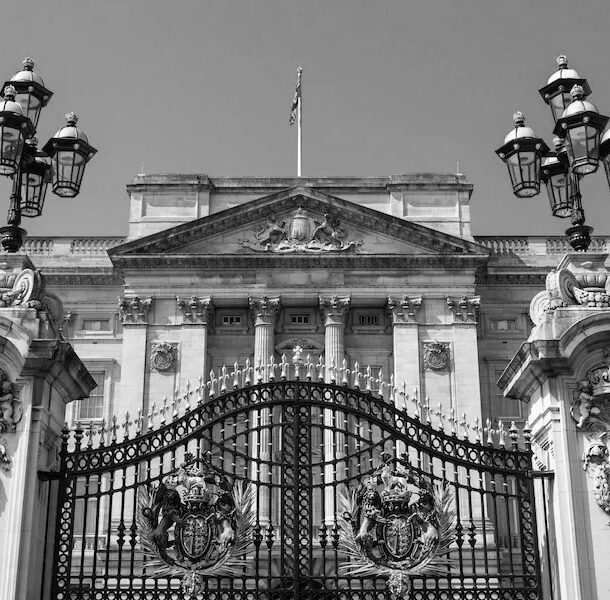

Close

Fitzpatrick Castle, once known as Killiney Castle, is a bucolic country retreat from Dublin. But in the late 1930s, it overflowed with dismembered alarm clocks and explosives stowed away in flour bags. Teenage volunteers studied the formulas they needed to blast holes through bridges with gelignite and memorized how to concoct explosives out of potassium chlorate and paraffin wax. The Irish Republican Army was poised to launch a bombing campaign on England, but first, it needed to train its foot soldiers.
After the Irish War of Independence, the Irish Free State signed a treaty with England that made southern Ireland an autonomous state within the United Kingdom, while six counties in the north were given the option to remain one with England. Their legislators chose to stay. The most radical parties in the Irish revolutionary movement fumed that their leaders had conceded Irish land to their oppressors just when a true victory was within reach. The anti-treaty Irish Republican Army lost the Irish Civil War in 1923, but it did not give up on its cause. For decades, the IRA waged guerrilla war on both the Irish government and Britain. It did not shy away from violence.
When the IRA took over the abandoned Killiney Castle, its leaders had already hatched a plan to bomb England into compromise. First, the leaders of the IRA published a bold ultimatum: Either England would withdraw all of its armed forces and officials from all of Ireland, including the north, or it should prepare for the consequences. The boldness of the IRA shocked and amused the English government. How could a band of rebels who did not even have the full support of Ireland force England to comply?
England did not meet the demands of the ultimatum, and so the bombing commenced. Séan Russell, the IRA Chief of Staff, insisted that no civilians would die; rather, the goal was to sabotage Britain’s infrastructure and military. But the marriage of unwieldy explosives and novice terrorists did not make for controlled attacks. 10 people died and 96 were injured during the bombing campaign.
Brendan Behan was one of the teenagers studying how to manufacture and detonate bombs at Killiney Castle. Years later, he would become one of Ireland’s most famous, bombastic, and hard-drinking writers. He was born in inner-city Dublin to a working-class but well-educated family steeped in anti-British politics. At 13, he had already dropped out of school to apprentice as a house painter like his father and grandfather before him.
He inhaled the fiery, revolutionary spirit of his family. He listened, enthralled, to his family’s memories of the Easter Rising of 1916 when Irish republicans rebelled against British rule and Britain retaliated with a brutal, bloody crackdown that set the mood for the Irish War of Independence. His parents, aunts, and uncles told their stories so well he felt that he was right there with them. At 14, he joined Fianna Élireann, the youth group with close ties to the IRA.
Behan was an angry young idealist, determined to go to any length to avenge the injustice inflicted on Ireland. Around the same time that the IRA recruited him to bomb England, he published a poem for the periodical The Workers’ Republic. He wrote:
I bring no songs of rolling drums
Of pennons flying gaily
I sing of filth and dirty slums
Gaunt man with hunger crazy
Canticles, not of virtue bright, nor holy austere lives.
I chronicle consumption’s blight
And the haggard face of wives
Who gaze on children, pale and wan
Who see no flowers nor hear birds song.
He had seen the indignities of poverty — the death, the disease, the hunger — and he blamed England. The IRA needed angry young idealists like Behan. Soon, he had left his apprenticeship behind and was training to be a terrorist.
As Behan learned to make bombs, he absorbed stories and literature that shaped his later writing. He remembered sitting in Killiney Castle, his head hazy with chemical formulas he had to master to reduce the risk of killing himself or someone else, when Peandar O’Flaherty, an IRA leader, started reading aloud. O’Flaherty had brought a new avant-garde novel overfilling with burlesque satire of Dublin life with him to Killiney. He couldn’t help but read it aloud to the IRA volunteers, which “he didn’t always do too coherently owing to bursting out laughing when it proved too much for him,” Behan remembered. At Killiney Castle, amid the chaos of his youth, the seeds of Behan’s literary style were planted.
Soon, Behan was on his way to blow up the docks of Liverpool. He made it to England — along with a sizeable amount of explosives — but he never carried out his mission. Scotland Yard came knocking at his door and caught him with a suitcase full of weapons attempting an escape out a window. He refused to testify against his superiors, although the English offered him a new name and a ticket to Canada. Instead, he languished in an English juvenile prison for three years. Later, he wrote his most famous book, Borstal Boy, about his memories from prison. He made friends with English working-class boys, and his anti-English fever broke. Although his ties to the IRA stayed strong for a few more years, prison smothered his revolutionary idealism. Violence had lost its luster.